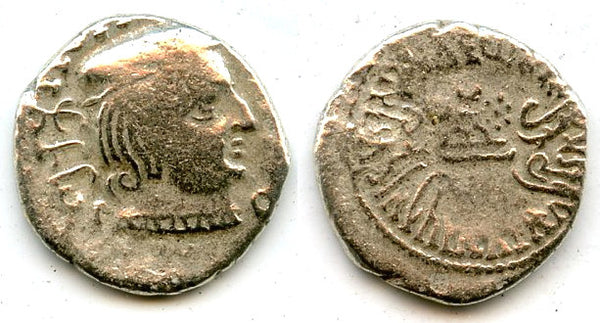
Bust of Vijayasena, with corrupted Greek legend (Indo-Greek style),date in Brahmi numerals behind (164 Saka Era = 242 AD) / Three-arched hill or Chaitya, with river, crescent and sun, within legend in Brahmi Rajno Mahaksatrapasa Damasenasaputrasa Rajno Mahaksatrapasa Vijayasanasa ("Or Raja Mahasatrap Vijayasena, son of Raja Mahasatrap Damasena"). 14mm, 1.78 grams. "Studies in the Coinage of Western Kshatrapas" #500-501; Fishman "The Silver Coinage of the Western Satraps in India" #23.3.167.
The Western Satraps, also known as the Kshatrapas, were a dynasty of Saka (Scythian) rulers who governed parts of western and central India - notably Gujarat, Maharashtra, Rajasthan, and Madhya Pradesh - from roughly the 1st to the 4th century CE. They were contemporaries and sometimes rivals of the Kushan Empire in the north and the Satavahanas in the south. The dynasty was founded by Chashtana around the mid-1st century CE and reached its peak under rulers like Rudradaman I, who is known for military success and patronage of infrastructure, including the repair of the Sudarshana Lake, documented in a famous Sanskrit inscription.
The Western Satraps issued an extensive series of silver coins, often bilingual in Greek and Brahmi, which have been crucial for reconstructing the chronology of early Indian history. Their rule represents a significant period of cultural fusion between Indo-Scythian and Indian traditions, and they played an important role in the spread of Buddhism and Jainism. The dynasty gradually declined with the rise of the Gupta Empire, which absorbed their territories by the mid-4th century CE.
